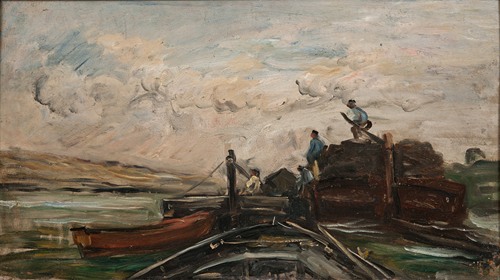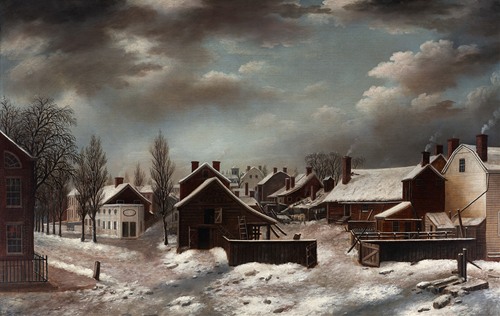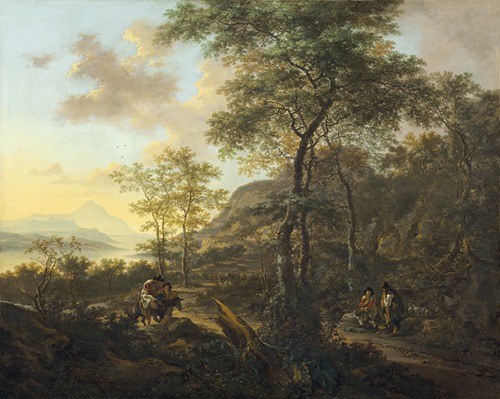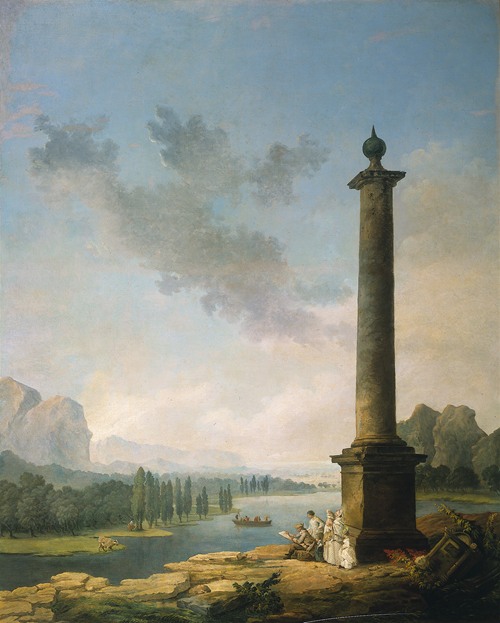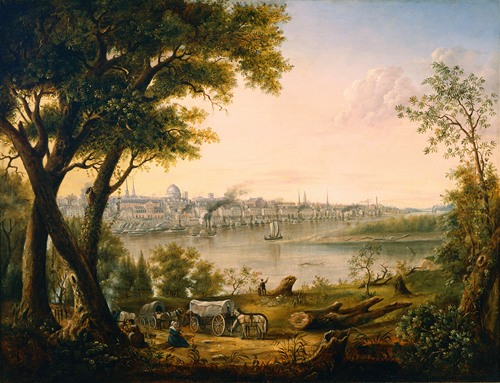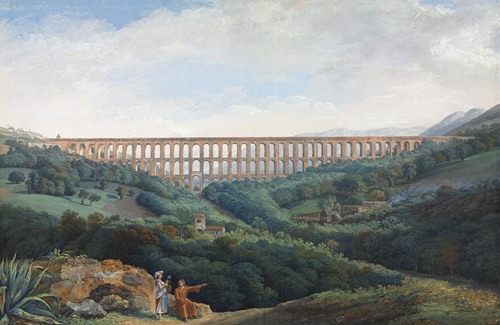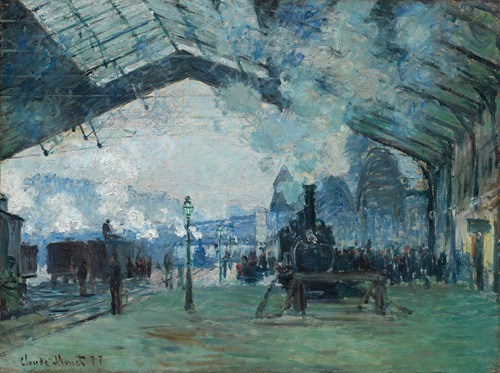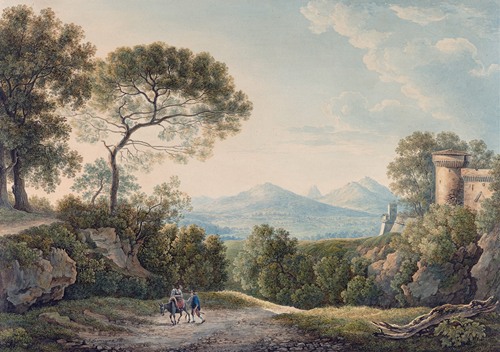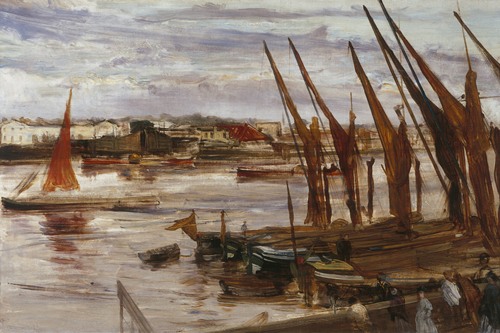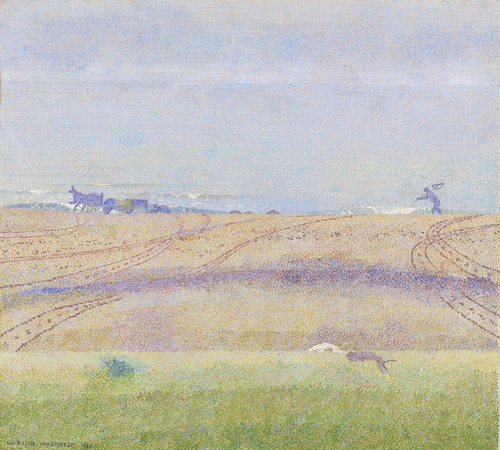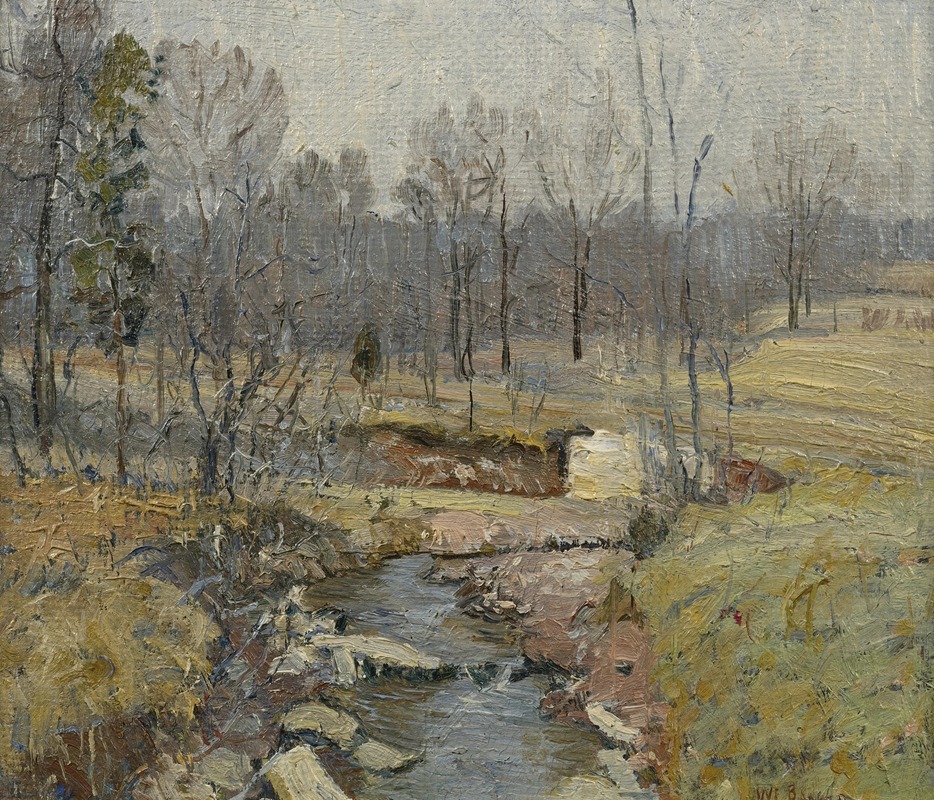
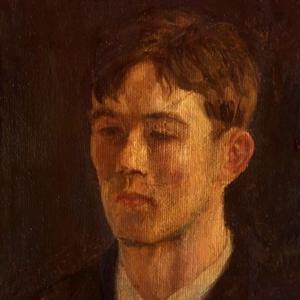
Walter Emerson Baum was an American artist and educator active in the Bucks and Lehigh County areas of Pennsylvania in the United States. In addition to being a prolific painter, Baum was also responsible for the founding of the Baum School of Art and the Allentown Art Museum.
Walter Emerson Baum was born in Sellersville, Pennsylvania and is one of the few Pennsylvania impressionists from Bucks County, Pennsylvania. Between 1904 and 1909, Baum studied with William B. T. Trego, taking lessons at Trego's home in North Wales, Pennsylvania, about 15 miles south of his native Sellersville. Baum attended the Pennsylvania Academy of the Fine Arts in Philadelphia in 1905 and 1906, where he studied with Thomas Pollock Anshutz, Hugh H. Breckenridge, William Merritt Chase, and Cecilia Beaux.
Faced with the responsibilities of a wife and four children, Marian, Ruth, Robert and Edgar, Baum took odd jobs to support his family. He worked in the family's barbershop, and worked as a photographer for The Poultry Item, a magazine which focused on chickens, ducks, and geese. He also wrote for the Sellersville, Pennsylvania-based newspaper, the Sellersville Herald, and was appointed its editor in 1921; he wrote columns for the paper until 1942. As his paintings became better known, he taught art classes at his home in Sellersville and at the local high school.
Baum was an active art instructor in the Allentown area from 1926 to 1956, where his students included John E. Berninger, Karl Buesgen, Joseph Gehringer, Walter Mattern, and Melville Stark. "The Baum Circle" refers to the artists either taught by, associated with, or directly influenced by Baum. In October 2006, the David E. Rodale Gallery at the Baum School of Art in Allentown, Pennsylvania held an exhibition celebrating the work of this group.
Baum worked as a columnist for the Sellersville Herald. In 1921, he was promoted to editor of the paper, where he worked until 1942. At the Herald, Baum wrote a weekly column in which he discussed the history, culture and ideals of his home town.
In 1938, Baum wrote Two Hundred Years (published by the Sellersville Herald, Sellersville Pennsylvania), a book documenting the history of the Pennsylvania Germans in the Sellersville area. Like his contemporaries N.C. Wyeth and Norman Rockwell, whose works graced the covers of The Saturday Evening Post for years, Baum also became involved in illustration. His first cover appeared in Curtis Publishing Company's Country Gentleman magazine in January 1931. In 1948, Baum provided illustrations and an introductory essay for the Selected Short Stories of Thomas Hardy (published by Rodale, Inc., Emmaus, Pennsylvania).
Baum also worked as an art critic and reviewer for the Philadelphia Evening and Sunday Bulletin, a position in which, as an artist himself, he was able to bring a unique perspective that became popular with readers. In this role, he was also able to promote local art and artists. During the Great Depression, a period during which artists found it extremely difficult to find work, his column was important in keeping the vibrant Philadelphia art community active and informed.
The Allentown Art Gallery was organized by Baum and opened in Allentown's Hunsicker School on March 17, 1934. With seventy canvases by local Pennsylvania impressionist artists on display, the gallery attracted major attention from the local and regional art communities. During the Great Depression, Baum was able to grow the collection through the Public Works of Art Project and through acquisitions and gifts. In June 1936, the City of Allentown granted the museum a permanent home in a Federal-style house located in the Rose Garden in Allentown's Cedar Park. The museum's first curator was local artist John E. Berninger, a student of Baum's, who lived with his wife on the museum's second floor.
In 1949, Walter Emerson Baum and Dr. Charles H. Boehm, Bucks County Superintendent of Schools, established the Bucks County Traveling Art Gallery, a program whose goal was to expose school children of Bucks County to the artwork of the New Hope School and the Pennsylvania Impressionist movement. The county-wide program was formally established by Boehm after positive feedback was received from parents and teachers when a Baum painting was purchased to celebrate the retirement of one of Baum's grammar school teachers.
The program was officially unveiled in a ceremony at the Bucks County Playhouse in New Hope, Pennsylvania. Notable Bucks County residents including Pearl S. Buck took part, as did many of the artists whose paintings were purchased for the gallery.
The collection, which now includes over 350 pieces of art, has visited all of the thirteen school districts in the county, and is managed by the Bucks County Intermediate Unit and maintained by the James A. Michener Art Museum. Artists represented in the collection include Baum, Walter Elmer Schofield, Sarah Blakeslee, and Harry Leith-Ross.
The Bucks County Intermediate Unit Collection is one of the most important collections of Pennsylvania Impressionist artwork outside of the Lenfest collection of the Michener Art Museum. It was the Bucks County Traveling Art Gallery that served as the impetus (albeit it took almost forty more years to come to fruition) for the establishment of a museum in Doylestown, Pennsylvania dedicated to the work of local artists.
Edgar Schofield Baum (1916–2006) was Walter Emerson Baum's eldest son. Edgar worked in a wide variety of media, including oil and acrylic painting, dyes, sculpture, and the writing of poetry and wit. He published a book of his writings, entitled Jest and Ernest: A Collection of Original Aphorisms and As-Isms.
Edgar attended the medical school at the University of Pennsylvania in Philadelphia and served as a combat medical officer in the European Theatre during World War II. At the end of the war, he returned to Allentown, Pennsylvania,and established a family practice that, for over 40 years, was located at 1624 Walnut Street, in the city's West Park neighborhood. He also served as a Baum School of Art trustee.
In October 2006, the David E. Rodale Gallery at the Baum School of Art held an exhibition celebrating the work of the Baum Circle. A memorial exhibition, celebrating Baum's life and work, was held at the Baum School during June 2007.

